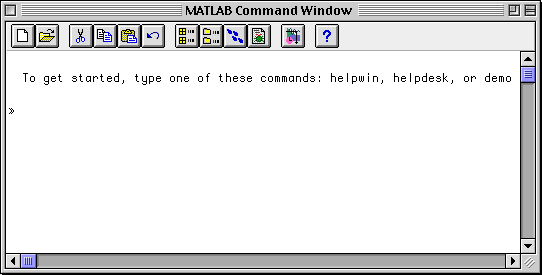Old fogey tales
When I originally mentioned to Ned that I might be interested in doing a MATLAB Central blog, he suggested that I write a few sample posts first to see how I liked it. One of the samples I wrote was a whimsical bit about how we techie types like to "tell our age" by telling stories about what the technology was like way back when we got our start.
For example, the first computer game I ever played was a text-based "Star Trek" game on an IBM 5100.


Later on I learned to program using a teletype terminal. It connected via acoustically coupled modem to "the computer" at the county school system's administration building 15 miles away. For a high-school math project I programmed a brute force eight-queens solver using unstructured Basic with goto's and single-character variable names.
I find myself in "old fogey tales" mode this week because of the article "Digital Photography: The Power of Pixels" in the January 2011 issue of IEEE Spectrum. This fascinating article tells the history of the development and popularization of the digital camera. It starts by discussing a 100-by-100 pixel camera created in 1975 by Kodak engineer Steven Sasson. Then it fast-forwards to the early 1990s and a few not-so-successful attempts to commercialize digital photography. Then things started to accelerate fast (with an assist from the new JPEG compression standard) through the mid- to late-1990s.
Reading this article made me reflect on my graduate-school days (1986-1990). I think I was in one of the last generations of student researchers in digital image processing who had a hard time getting digital image data to work with. This was the era when almost all images that appeared in the research literature seemed to be from the same small set of images in the USC image database that was passed by mag tape from school to school. For my image compression research I spent more time than I care to remember with the "boat" and "peppers" images.


(Like every other image compression researcher at the time, I also frequently used another famous "standard" image. I don't use that one anymore.)
(The digital speech processing students also had their small number of speech samples that they worked with over and over again. I swear I had dreams about "Oak is strong and also gives shade" and "The pipe began to rust while new.")
For image display we were in good shape, because in my first year of grad school my lab got several Sun workstations with X Window graphic displays. Those were really great machines!
Disk space was a problem. One year my department won a large NSF grant for purchasing a Multiflow Trace computer. It came with a 1 GB hard drive, which we were very excited about! We thought that would certainly last us until we graduated. But then a vector quantization codebook generator gone wild filled up the disk during a single weekend.
Publishing image results in papers was a nightmare. It was very hard to get good image reproduction in journal papers (and impossible for conference papers). Getting images onto transparency for use in presentations was also an ordeal. For most of my grad school time, there was only one device (a high-end Linotype printer) at Georgia Tech that could do a good job printing digital images.
What are your own personal favorite bygone technology tales? Post them here as a comment. (They don't need to be image-related.)







コメント
コメントを残すには、ここ をクリックして MathWorks アカウントにサインインするか新しい MathWorks アカウントを作成します。